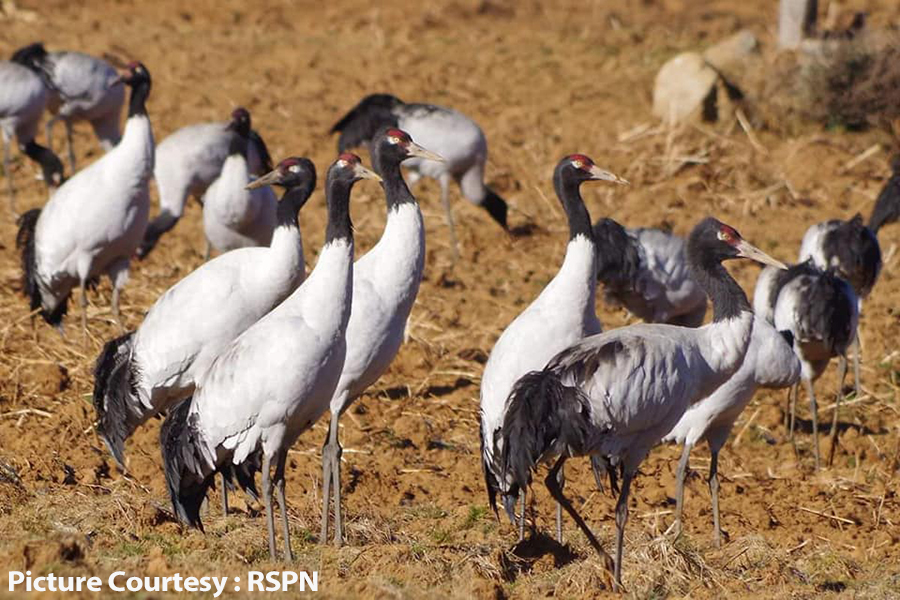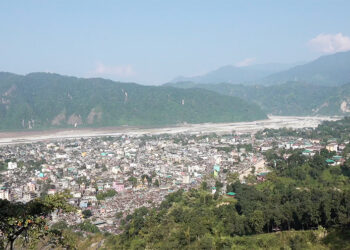 Bhutan recorded an increase in the population of black-necked cranes this winter. According to the Royal Society for Protection of Nature, RSPN more than 700 cranes were recorded nationwide. This is an increase of 33 cranes compared to the last winter. In contrast, Bumdeling in Trashi Yangtse has seen a steady decline in crane numbers over the years.
Bhutan recorded an increase in the population of black-necked cranes this winter. According to the Royal Society for Protection of Nature, RSPN more than 700 cranes were recorded nationwide. This is an increase of 33 cranes compared to the last winter. In contrast, Bumdeling in Trashi Yangtse has seen a steady decline in crane numbers over the years.
 Phobjikha in Wangdue Phodrang continues to be the preferred wintering site for the cranes in Bhutan, recording the highest number of cranes yet again with 650 of them. The valley also saw an increase of 41 cranes compared to the previous winter.
Phobjikha in Wangdue Phodrang continues to be the preferred wintering site for the cranes in Bhutan, recording the highest number of cranes yet again with 650 of them. The valley also saw an increase of 41 cranes compared to the previous winter.
Tang in Bumthang and Lhuentse each recorded three cranes, while Khotokha in Wangdue Phodrang and Chhumey in Bumthang registered two each.
With 59, Bumdeling reported the second highest number of cranes, Bumdeling recorded the second-highest number of cranes at 59, falling three shy of last year’s count of 62. In 2022, the figure was 70.
RSPN said habitat degradation and disturbances at both wintering and summer sites contribute to the declining population of black-necked cranes.
The NGO added that it has been actively working on habitat conservation to address the declining population in some areas.
Since 2017, habitat restoration works were carried out in Bumdeling, while also conducting migration studies to track crane movements.
Additionally, RSPN is implementing a three-year joint project in collaboration with the International Crane Foundation to enhance crane habitats.
According to the International Union for Conservation of Nature, the black-necked crane is classified as ‘near threatened’, indicating that the species is at risk of becoming endangered in the future.
Deki Lhazom
Edited by Kipchu









